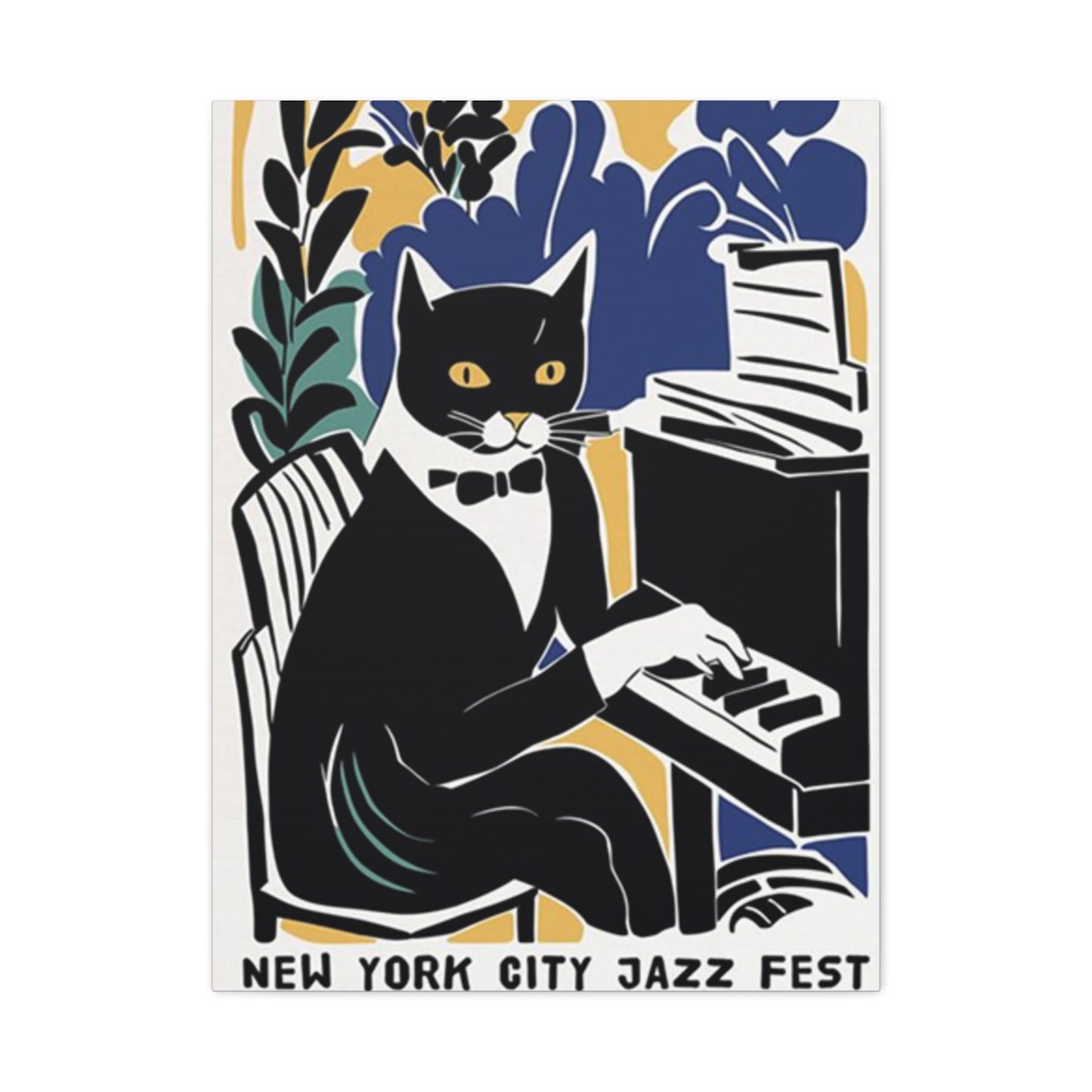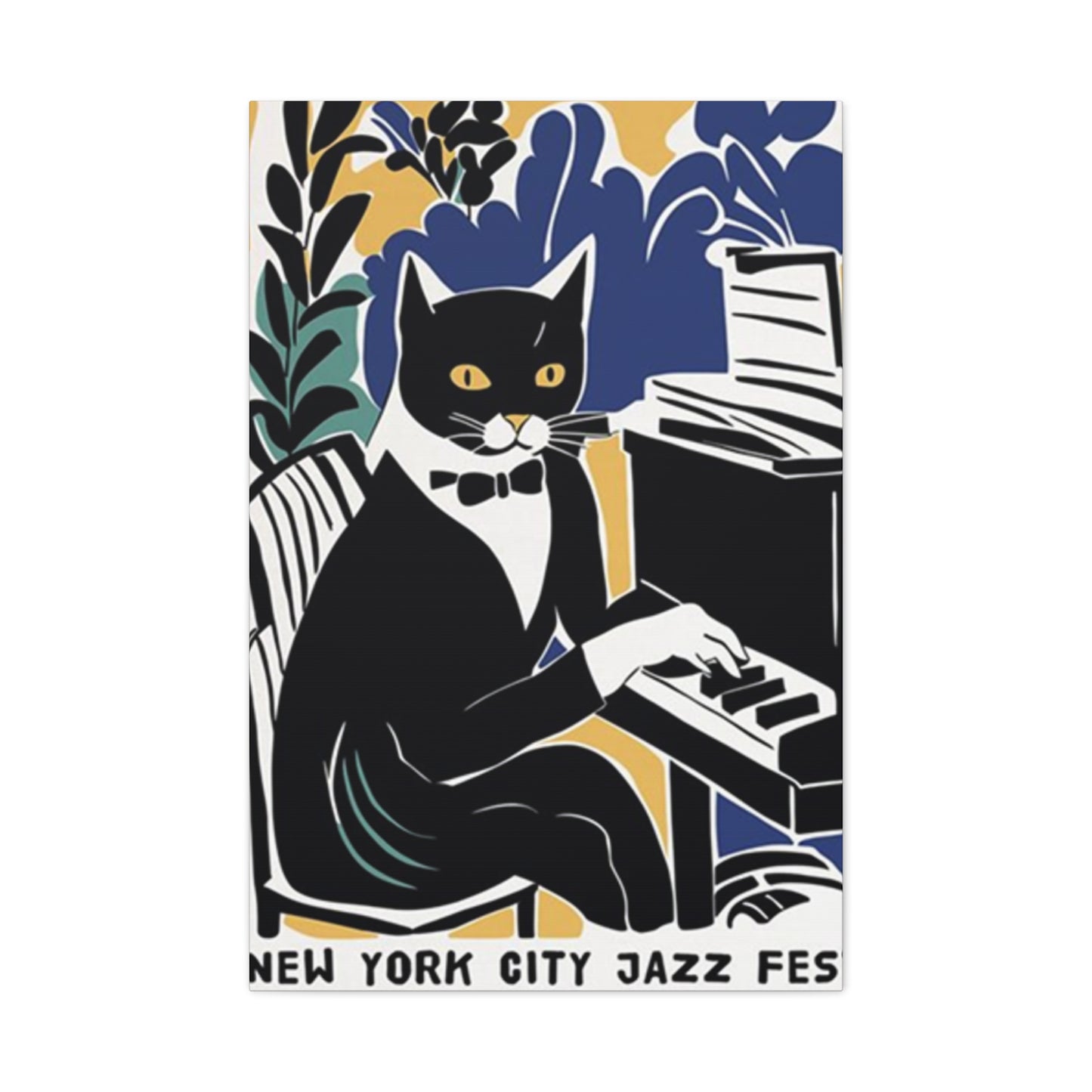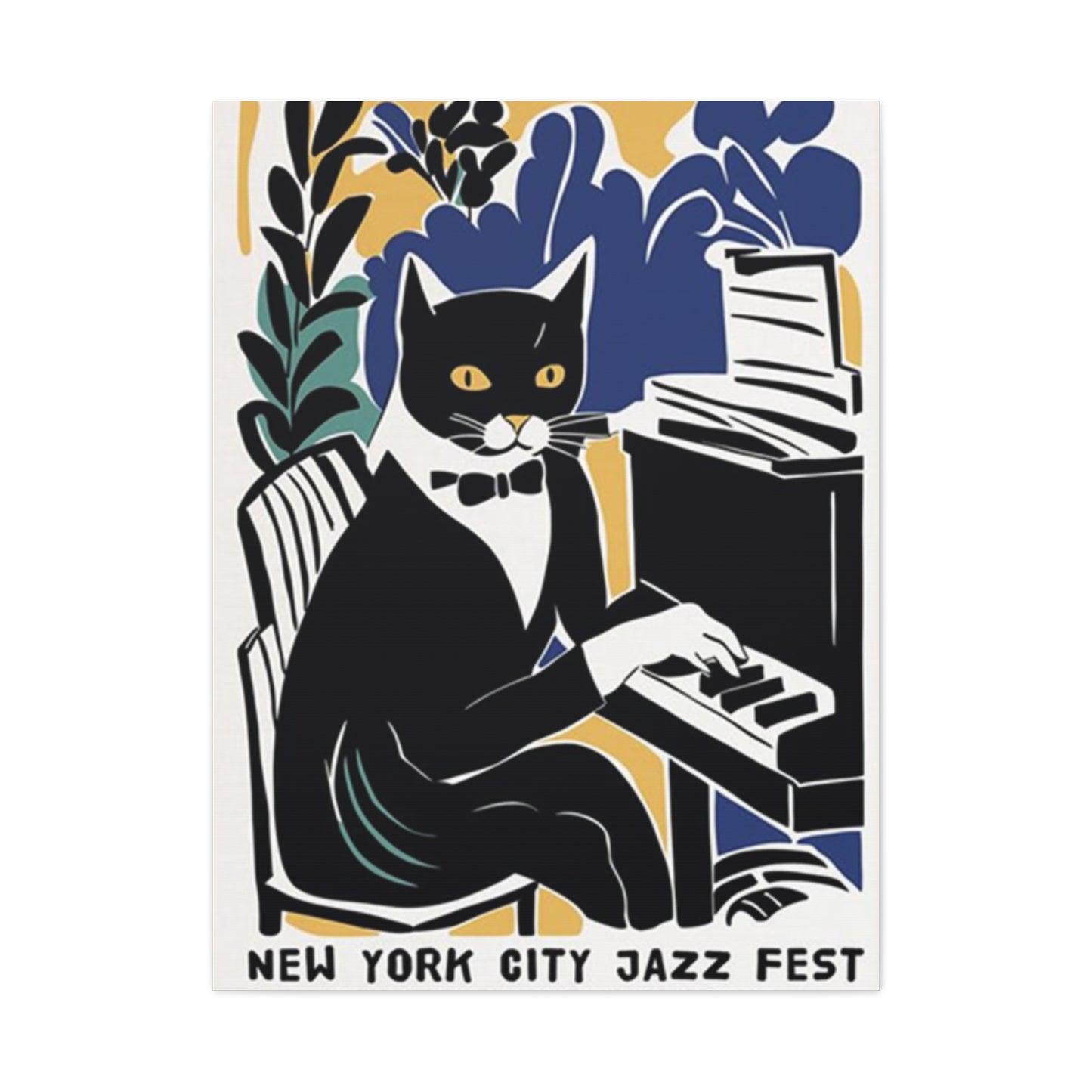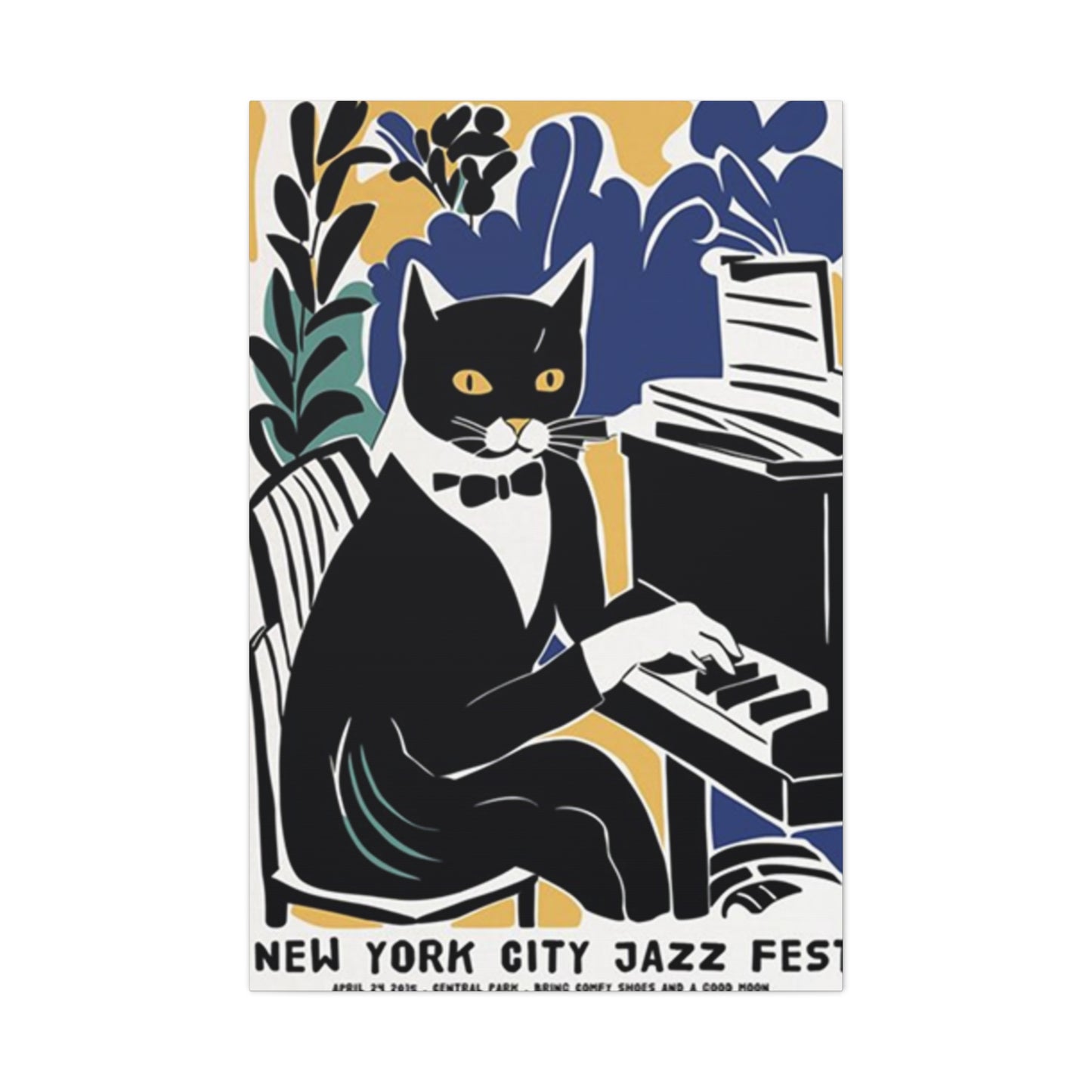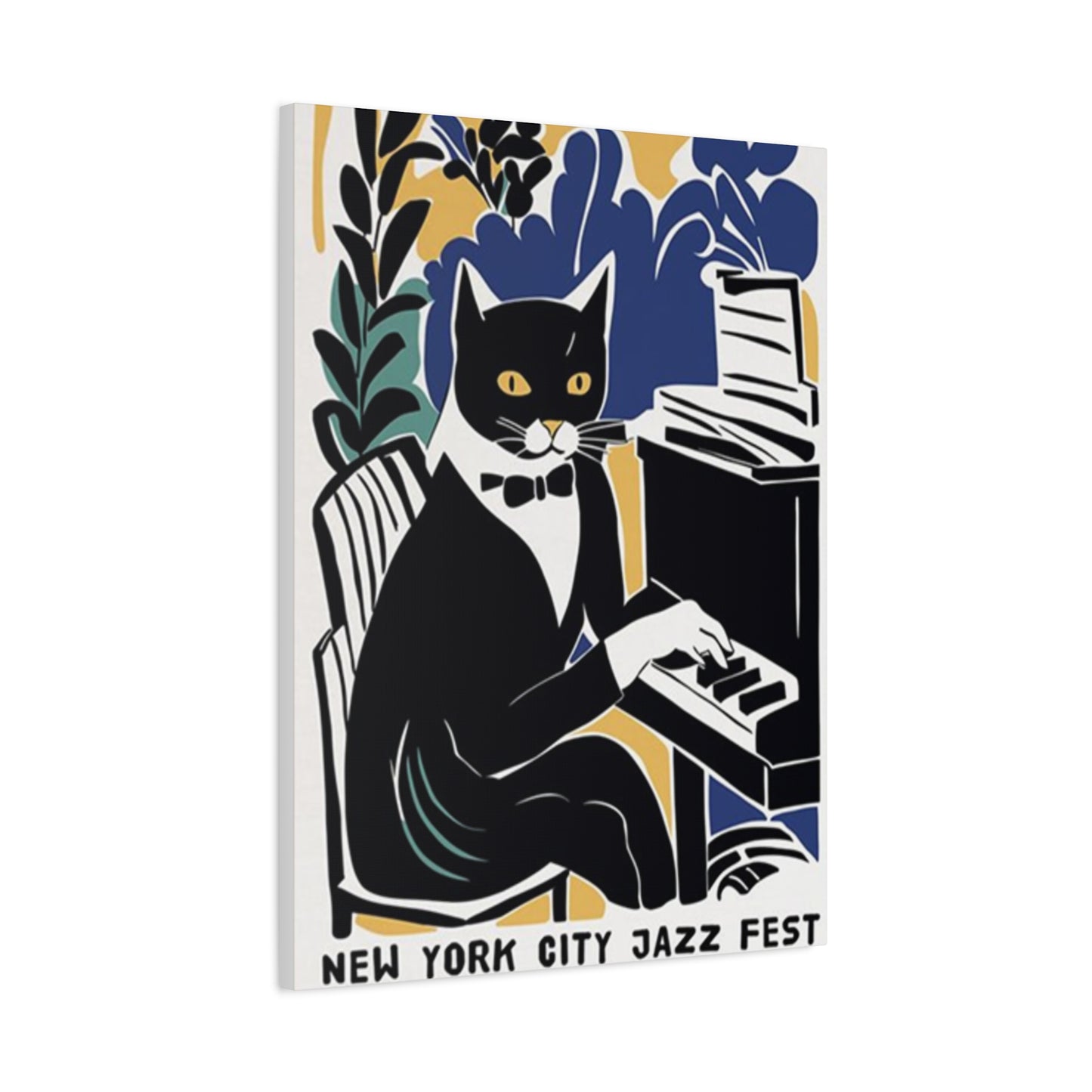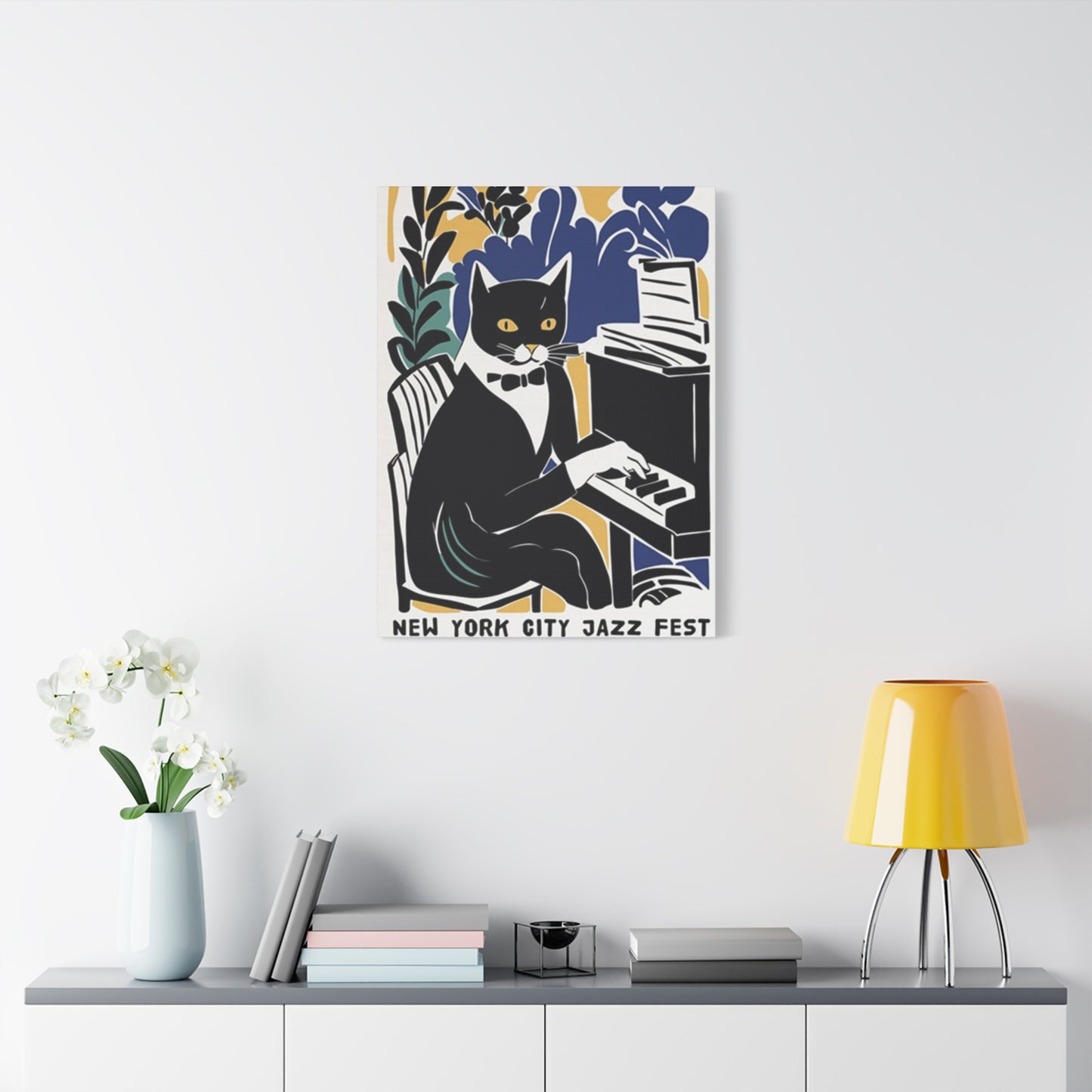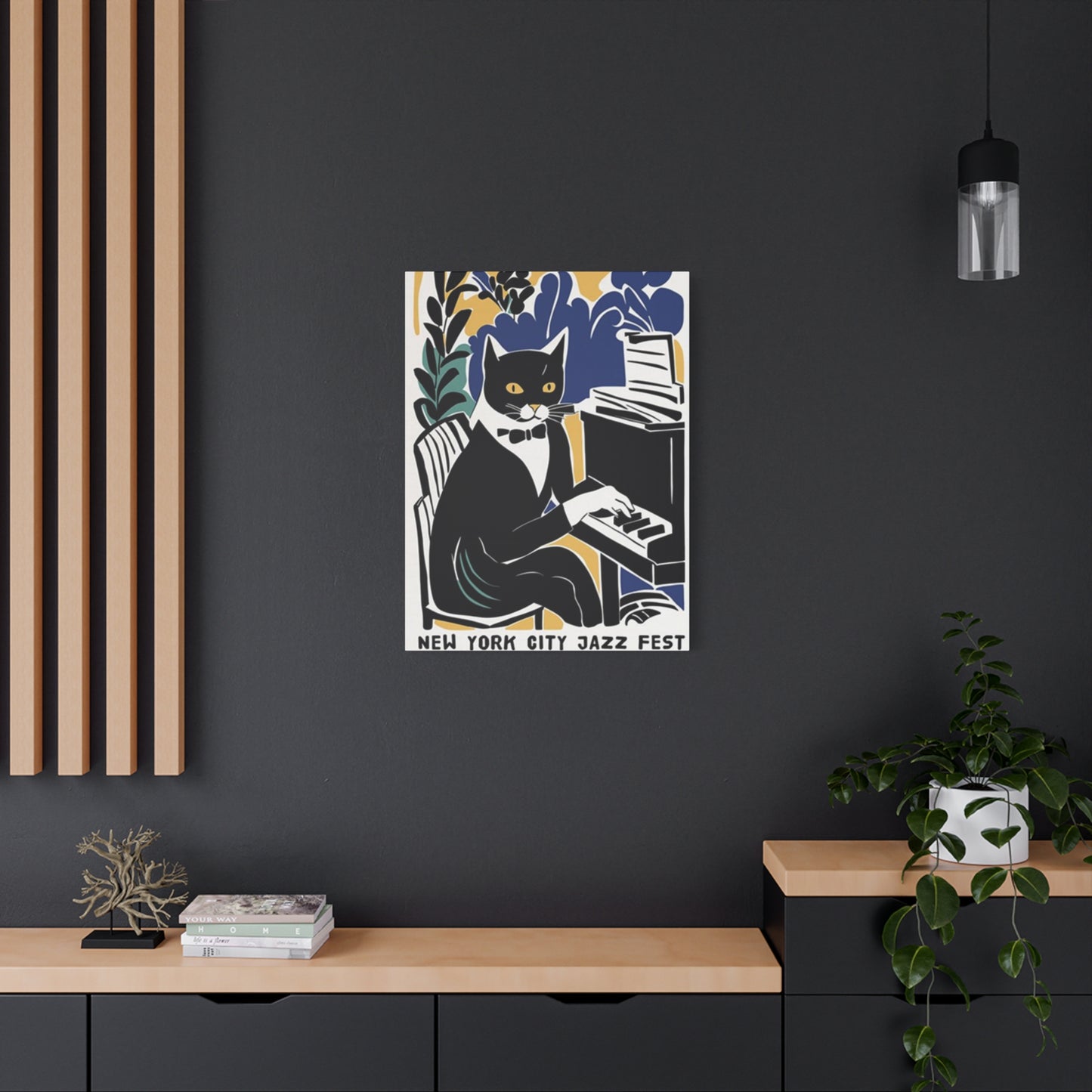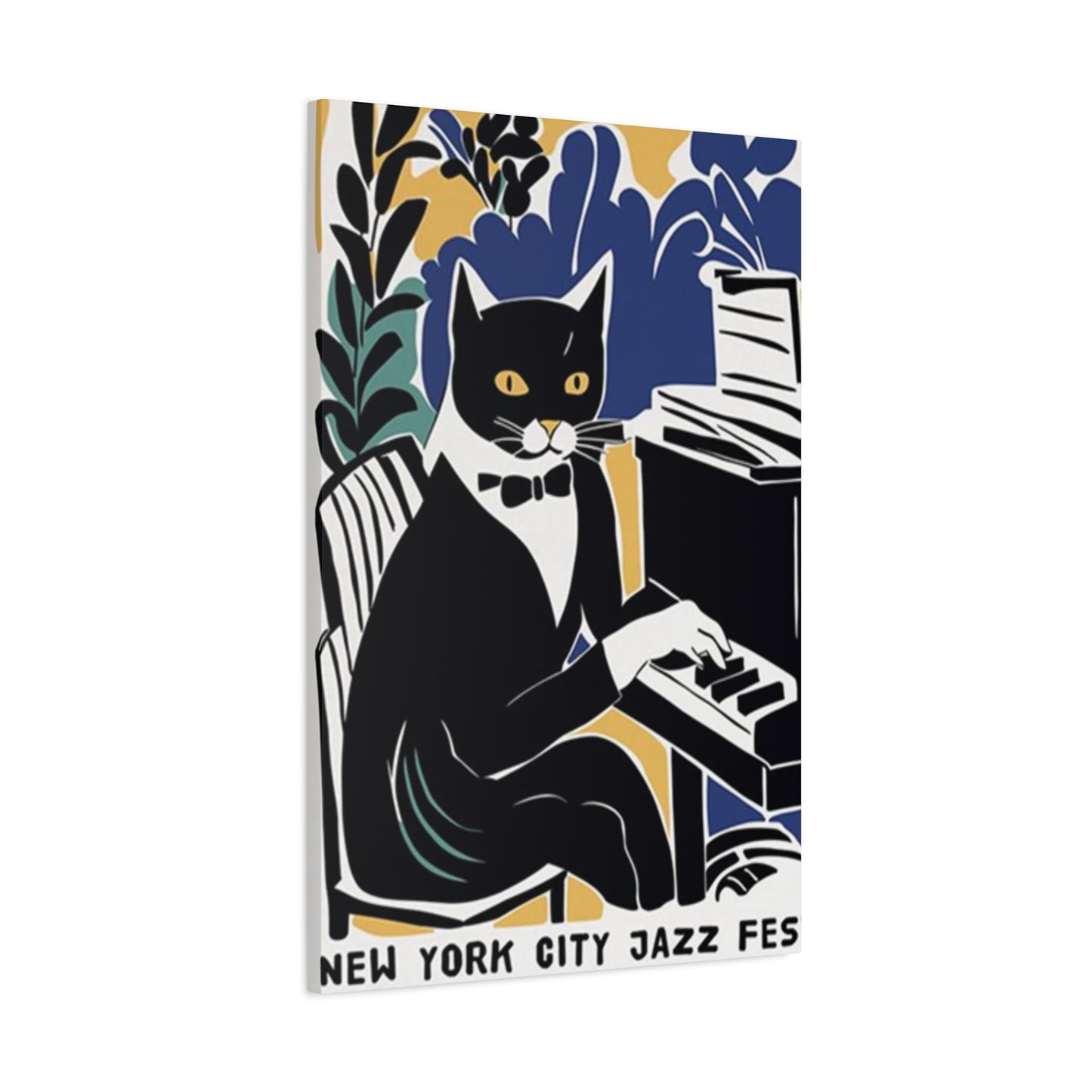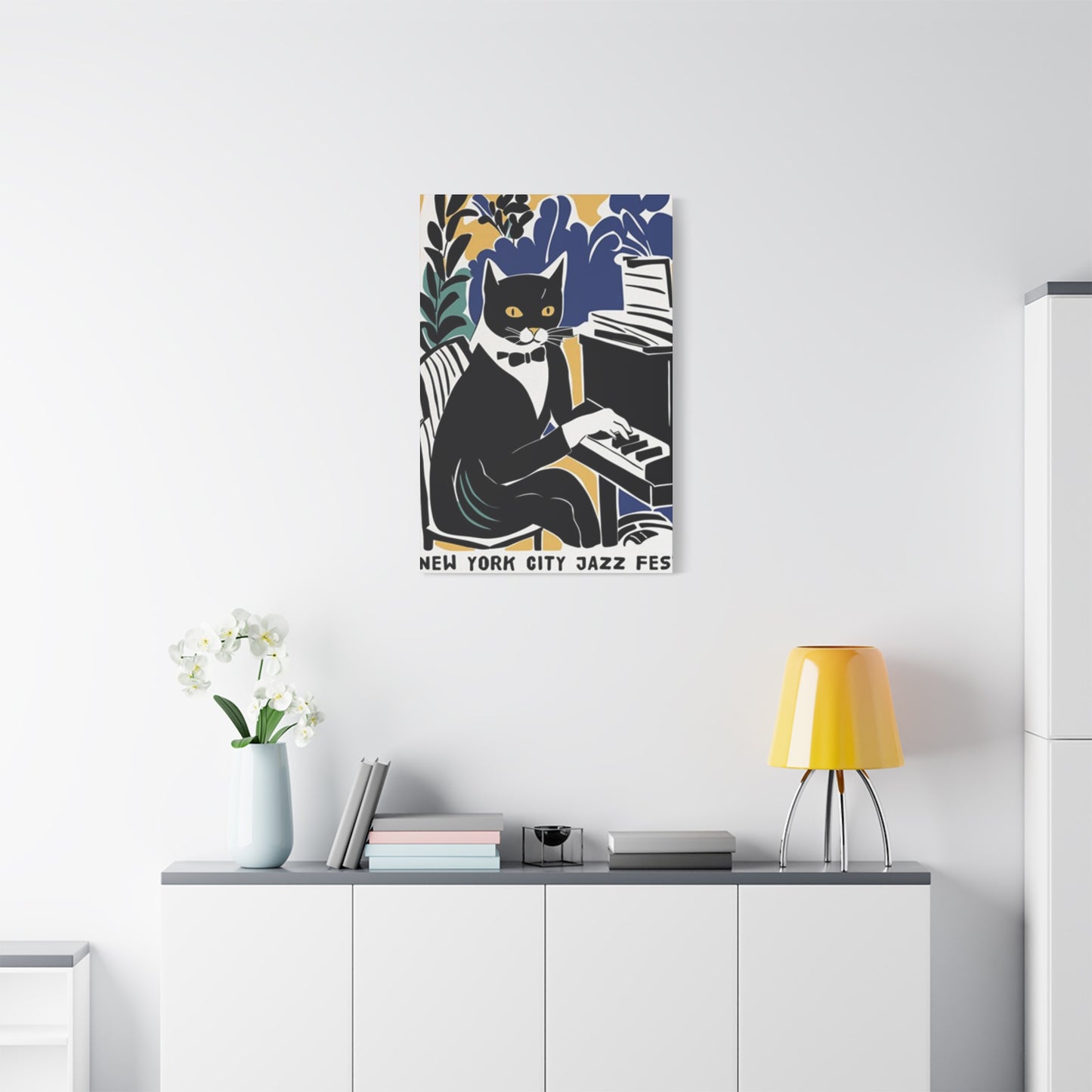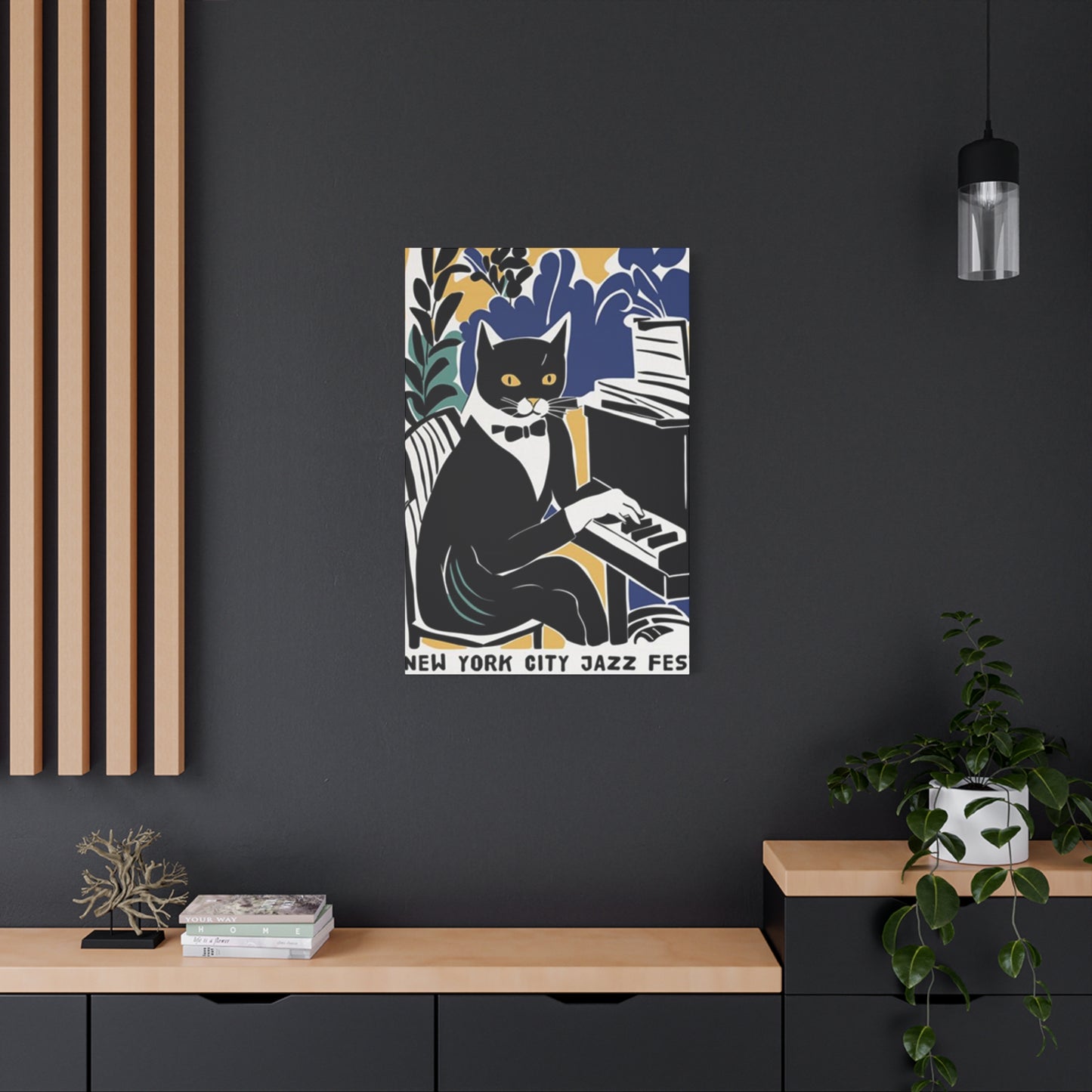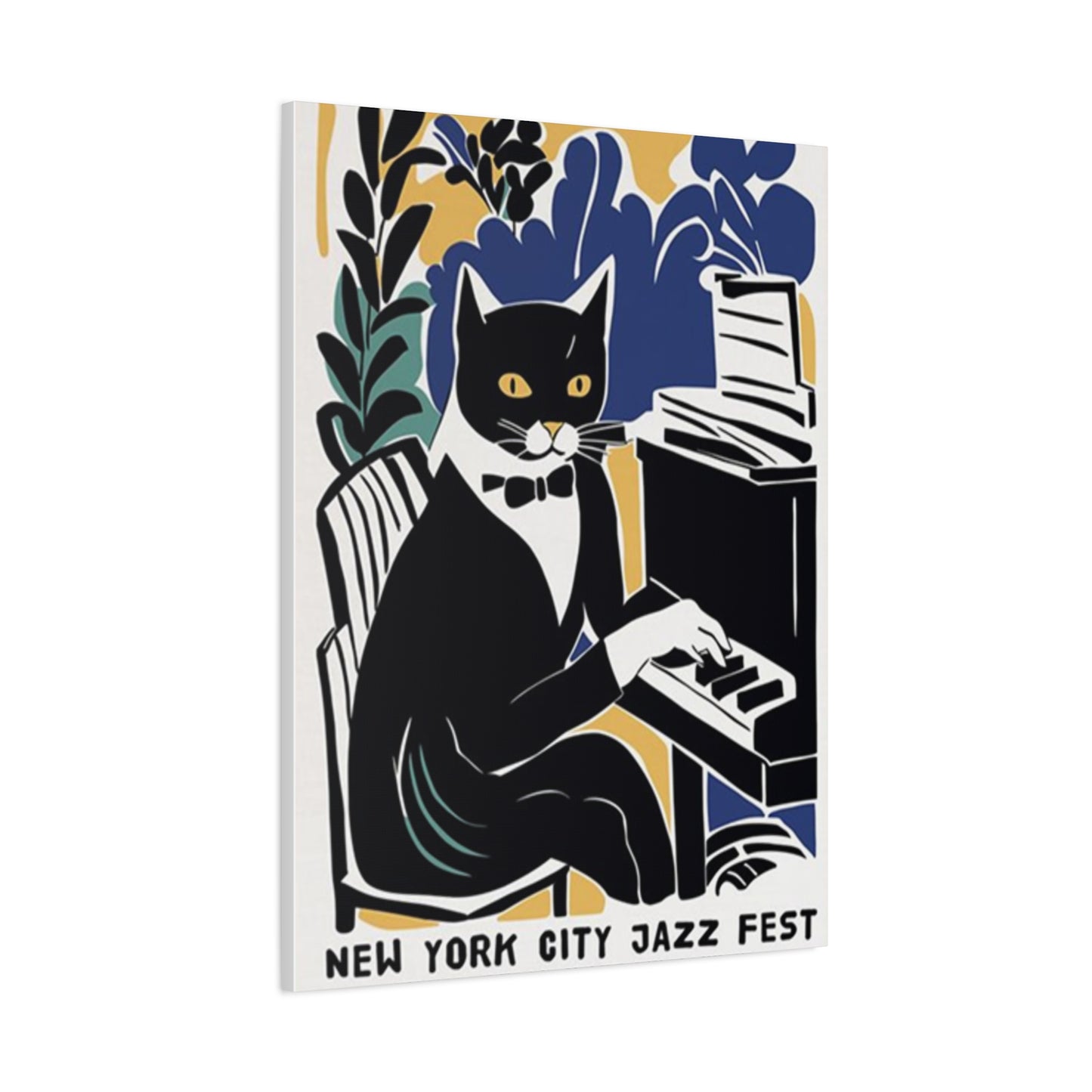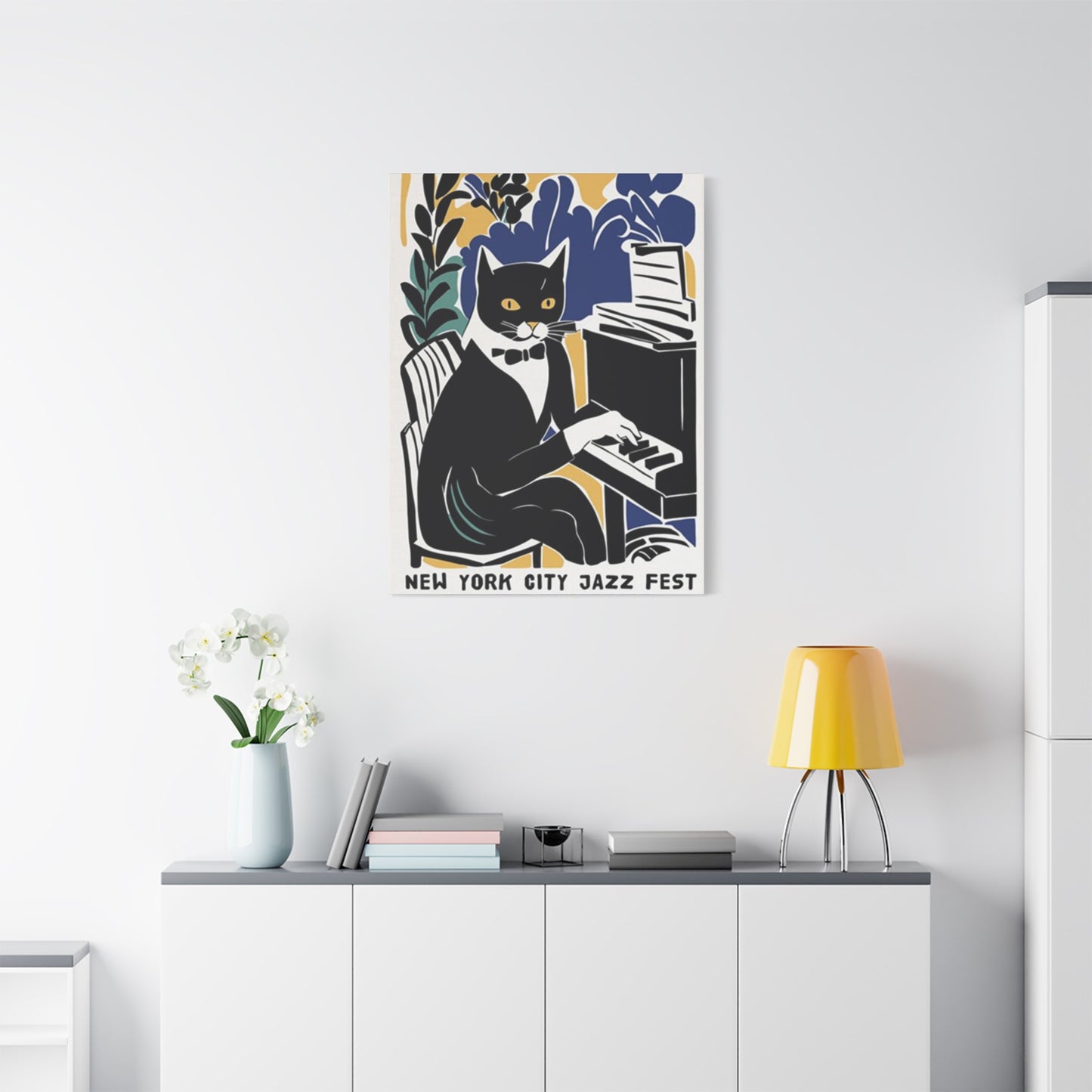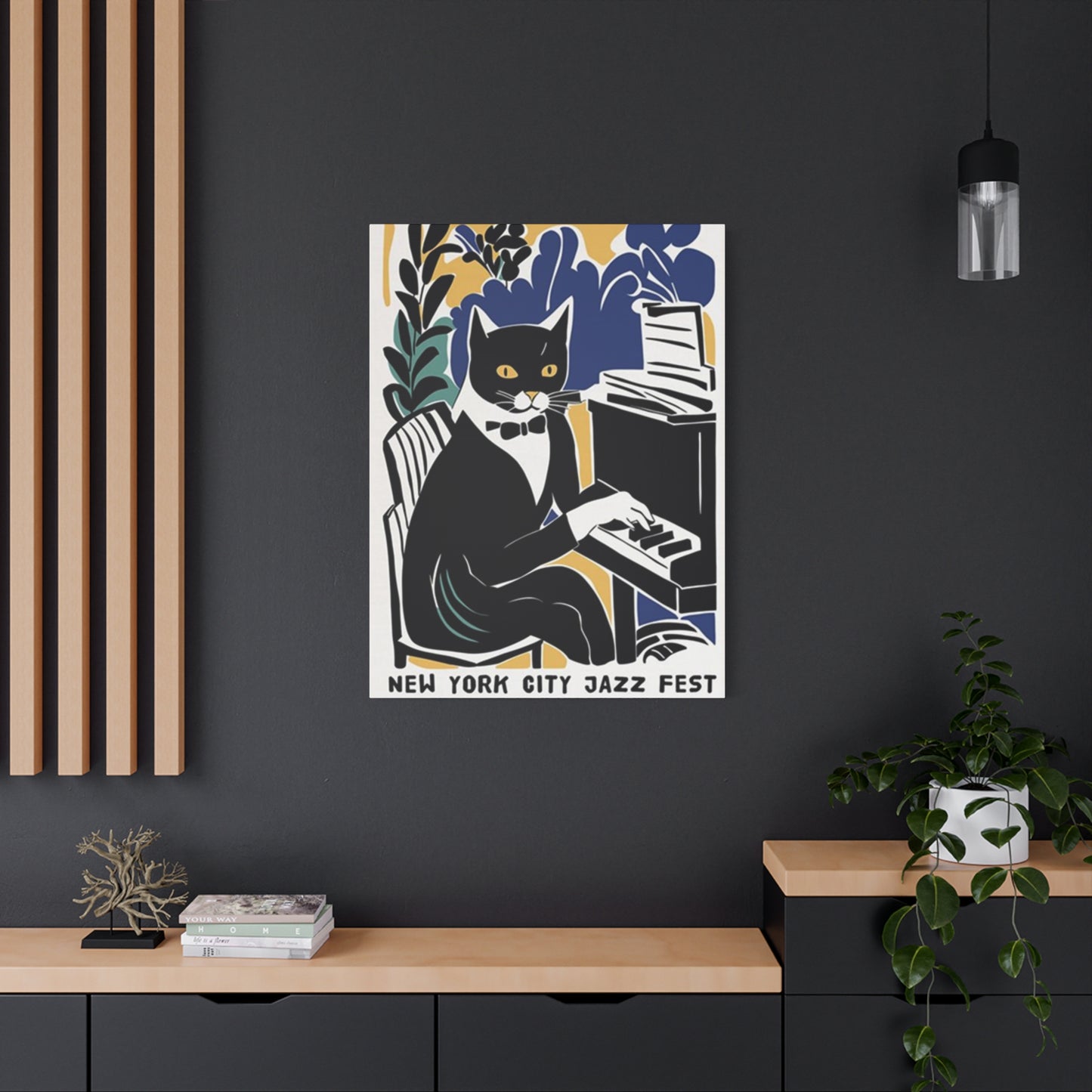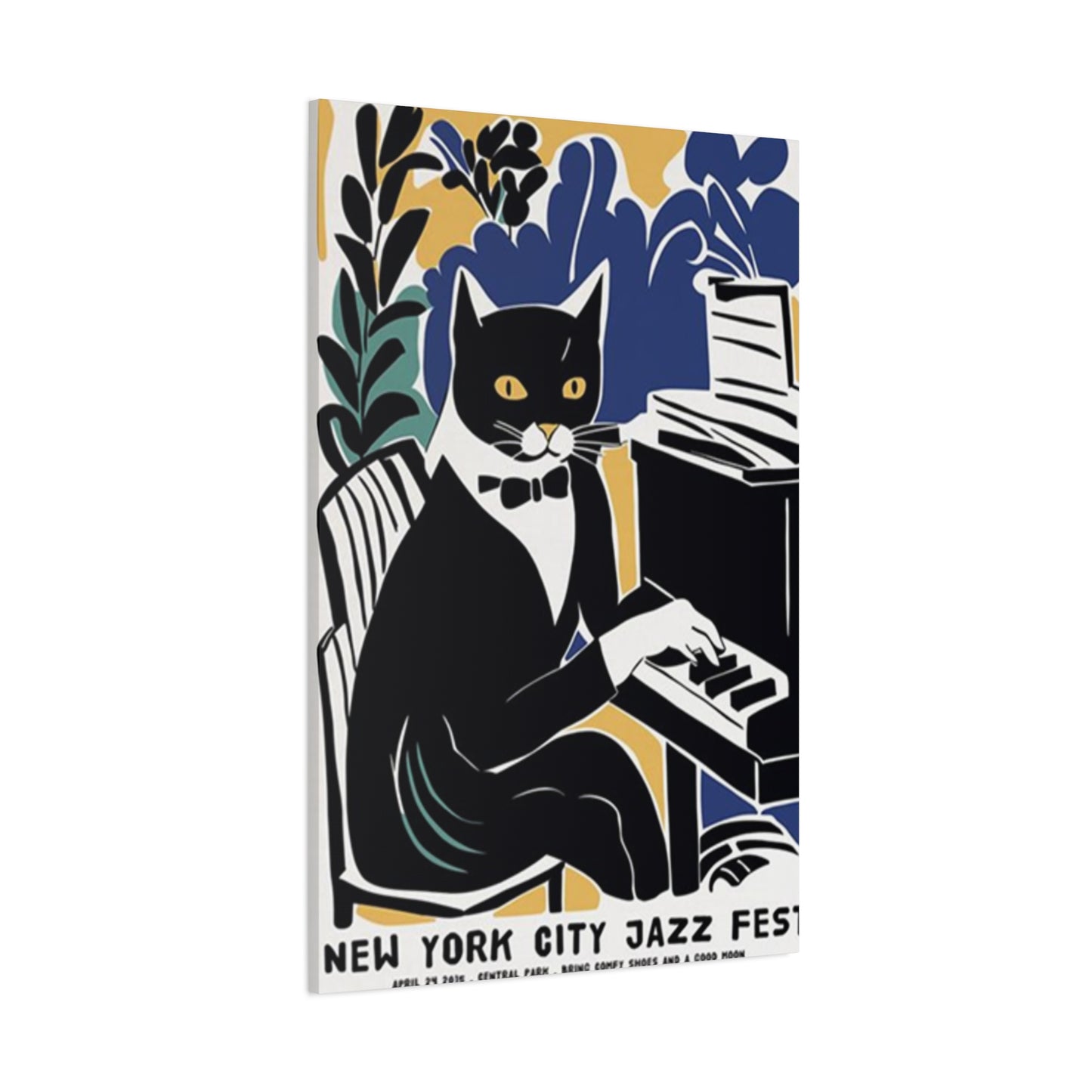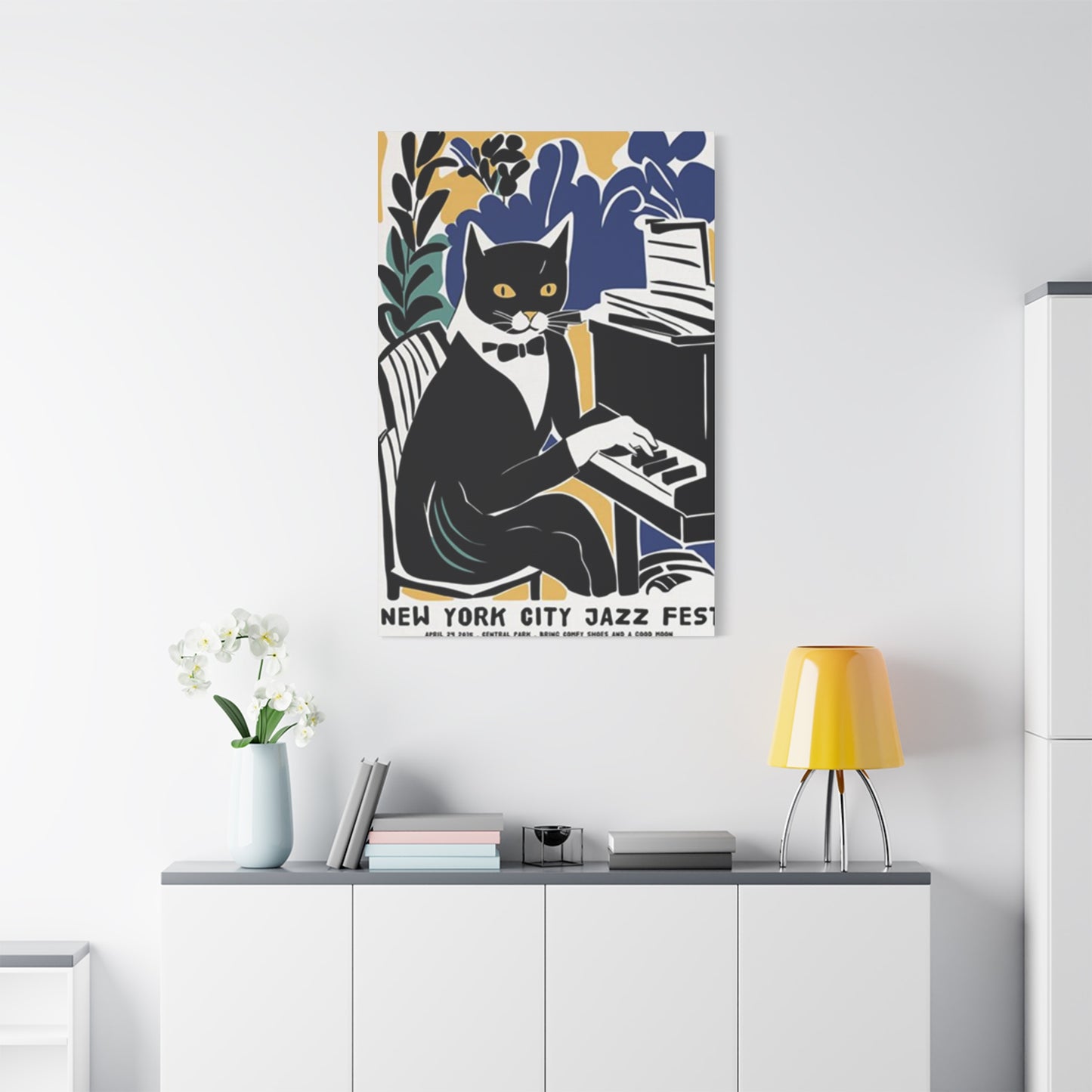NYC Jazz Fest Wall Art: Bringing Musical Heritage to Your Walls
The vibrant essence of New York City's jazz festivals has long been a source of inspiration for art enthusiasts and music lovers alike. When the soulful melodies of saxophone and trumpet fill the air during these iconic gatherings, they create moments worth preserving forever. Canvas prints capturing the spirit of these musical celebrations offer a unique way to infuse your living spaces with the energy and sophistication that define the Big Apple's jazz heritage. Through carefully crafted wall art, you can transform ordinary rooms into spaces that resonate with the timeless appeal of live performances and the cultural richness that makes New York a global music capital.
Experience the Pulse of Musical Celebrations Through Visual Art
New York City has established itself as a premier destination for jazz enthusiasts from around the world. The festivals held throughout the year showcase legendary performers and emerging talents who breathe life into this distinctly American art form. When you incorporate canvas prints inspired by these events into your home décor, you create an immediate connection to the excitement and passion that characterize live performances. The visual representation of musicians in action, audience members swaying to rhythmic beats, and the atmospheric lighting of outdoor venues all combine to produce artwork that speaks to both the eyes and the soul.
These artistic interpretations capture more than just images; they preserve the feeling of being present at a moment when music transcends ordinary experience. The brushstrokes and color palettes chosen by artists reflect the improvisational nature of jazz itself, with bold contrasts and flowing movements that mirror the spontaneity of a live solo. Whether depicting a crowded amphitheater under city lights or an intimate club setting where notes seem to hang in the air, these canvas pieces serve as windows into a world where sound becomes visible and emotions take tangible form.
The connection between visual art and musical performance has deep roots in New York's cultural history. For decades, painters and photographers have sought to capture the essence of jazz, creating works that complement and enhance the auditory experience. Modern canvas prints continue this tradition while making these artistic interpretations accessible to everyone who appreciates the genre. By selecting pieces that resonate with your personal taste in music and design, you establish a living environment that celebrates creativity and cultural significance in equal measure.
Transform Your Living Space with Musical Atmosphere
Interior design has evolved to embrace personalization and meaningful expression, moving beyond generic decorative elements toward pieces that tell stories and reflect individual passions. Canvas art inspired by New York's jazz festivals serves this purpose beautifully, offering homeowners an opportunity to showcase their appreciation for music while enhancing their aesthetic environment. The warm tones typically associated with jazz venues, combined with the dynamic energy captured in performance photography or artistic renderings, create focal points that naturally draw the eye and spark conversation.
When selecting wall art for your home, consider how different pieces might complement existing furniture and color schemes. The rich golds, deep blues, and warm browns often featured in jazz-inspired artwork coordinate well with both modern minimalist settings and more traditional décor styles. A large canvas depicting a festival scene can anchor an entire room, while smaller pieces arranged in a gallery wall formation allow for creative expression across multiple frames. The versatility of these prints means they work equally well in living rooms, home offices, music rooms, or entertainment spaces where friends and family gather.
The psychological impact of surrounding yourself with art that reflects your interests should not be underestimated. Studies in environmental psychology suggest that personalized spaces contribute to overall well-being and satisfaction with one's home. When you walk into a room adorned with imagery from your favorite musical genre, you experience an immediate sense of comfort and belonging. The visual reminders of memorable concerts or the anticipation of future festivals create positive associations that enhance daily life. This emotional connection transforms a house into a home, making your personal space truly reflective of who you are and what you value.
Beyond individual enjoyment, these artistic pieces serve as excellent conversation starters when entertaining guests. Visitors who share your appreciation for music will immediately recognize and connect with the imagery, while those less familiar with jazz culture may find themselves drawn into discussions about the history and significance of these festivals. This social dimension adds another layer of value to your investment in quality canvas art, turning your walls into storytelling devices that bridge connections between people through shared cultural appreciation.
Embrace the Energy of Live Performance in Artistic Form
The electricity that fills the air during a live jazz performance is difficult to describe but impossible to forget once experienced. Artists who specialize in capturing these moments understand that their work must convey not just visual accuracy but emotional truth. The way a musician's body moves with the music, the concentration evident in a soloist's expression, and the collective energy of an engaged audience all contribute to the overall atmosphere that makes festival attendance so memorable. Quality canvas prints preserve these elements, allowing you to revisit those feelings whenever you glance at your walls.
Photography from actual festival events offers one approach to this artistic challenge, freezing decisive moments when performer and instrument become one. The grain of the image, the play of stage lighting, and the authentic setting all contribute to a sense of documentary realism that appeals to purists who value historical accuracy. These photographs serve as time capsules, preserving specific performances and venues that hold special significance in the evolution of jazz as a living tradition. Collectors often seek out limited edition prints from particular years or festivals, creating a visual archive of memorable events.
Alternatively, interpretive artwork takes a different approach, using painterly techniques to suggest the essence of performance rather than document specific moments. Abstract representations might use sweeping color fields to evoke the flow of improvisation, while more figurative styles capture the human drama of musicians pouring their souls into their craft. This artistic interpretation allows for greater creative freedom, resulting in pieces that function as standalone artworks while still maintaining clear connections to their musical inspiration. The choice between photographic realism and artistic interpretation ultimately depends on personal preference and the overall aesthetic you wish to achieve in your space.
Mixed media approaches offer yet another avenue for expressing the relationship between jazz and visual art. Combining photographic elements with painted details, incorporating sheet music fragments, or adding textural elements that suggest the physicality of sound production creates layered works that reward close examination. These complex pieces often become centerpieces in art collections, drawing viewers in for repeated viewings as new details reveal themselves over time. The depth and richness of such artwork mirrors the complexity of jazz itself, with its multiple voices and layered harmonies creating something greater than the sum of individual parts.
Celebrate Cultural Heritage Through Iconic Musical Traditions
New York City's role in the development and popularization of jazz cannot be overstated. From the Harlem Renaissance to the bebop revolution and beyond, the city has served as an incubator for innovation and a stage for legendary performances that shaped the course of American music. The festivals held throughout the boroughs today continue this legacy, honoring past masters while providing platforms for contemporary artists to push boundaries and explore new directions. Canvas art that references this rich history connects current enthusiasts with generations of musicians and listeners who found meaning and joy in this uniquely expressive art form.
Understanding the historical context enhances appreciation for festival-inspired artwork. The clubs where Charlie Parker and Dizzy Gillespie revolutionized jazz, the outdoor venues where Ella Fitzgerald captivated thousands, and the neighborhood stages where unknown talents first found their voices all contribute to the tapestry of stories woven into the city's musical identity. When you display art that acknowledges this heritage, you participate in keeping these stories alive for future generations. The visual language of these pieces often incorporates iconic imagery, from vintage microphones to classic cityscapes, creating immediate recognition while inviting deeper exploration of the themes they represent.
Contemporary festivals maintain strong connections to this historical foundation while embracing modern sensibilities and diverse influences. Today's events feature not only traditional jazz but also fusion styles that incorporate elements from hip-hop, electronic music, Latin rhythms, and world music traditions. This evolution keeps the genre vital and relevant, attracting new audiences while satisfying longtime devotees. Artwork reflecting these contemporary festivals captures this dynamic quality, showing how jazz continues to grow and adapt without losing its essential character. The visual diversity of modern festival art mirrors the musical diversity found on today's stages, offering collectors numerous styles and approaches to choose from.
The educational aspect of displaying such artwork should not be overlooked, particularly in homes where children are growing up. Exposing young people to visual representations of cultural achievements helps instill appreciation for artistic excellence and historical significance. A canvas print depicting a vibrant festival scene might spark questions about the music, leading to family listening sessions or attendance at local performances. This organic introduction to jazz culture can plant seeds that grow into lifelong passions, continuing the cycle of appreciation and support that keeps live music thriving in communities around the world.
Discover Dynamic Visual Expressions of Musical Passion
The relationship between music and visual art has fascinated creators and audiences throughout human history. In the context of jazz, this relationship takes on particular significance because both art forms share an emphasis on improvisation, emotional expression, and the transformation of raw feeling into structured beauty. Artists who work in this space must possess not only technical skill but also deep understanding of the music that inspires them. Their canvases become translations, converting auditory experiences into visual language that communicates across the boundary between senses.
Color choices play a crucial role in conveying the mood and character of different jazz styles. The cool, sophisticated palette associated with West Coast jazz differs dramatically from the hot, intense colors that might represent hard bop or free jazz. Blues and greens suggest the contemplative quality of ballads, while reds and oranges capture the fire of up-tempo numbers. Skilled artists manipulate these associations to create pieces that feel authentically connected to specific musical moments or general atmospheric qualities. When selecting artwork for your home, paying attention to these color relationships helps ensure that the pieces you choose genuinely resonate with the musical experiences they reference.
Composition within the frame also carries meaning, with artists using spatial relationships to suggest musical concepts. A soloist positioned prominently in the foreground while band members recede into softer focus mirrors the structure of a jazz arrangement where individual voices emerge from and return to the ensemble sound. Diagonal lines and dynamic angles create visual movement that parallels the forward momentum of a swinging rhythm section. Negative space can represent the pauses and silence that give music its breathing room, preventing the overcrowding that would diminish impact. These compositional choices may work on a subconscious level, creating feelings of harmony and balance that contribute to the overall effectiveness of the artwork.
Texture adds another dimension to canvas prints, particularly when the printing process or artistic technique creates actual physical variation on the surface. Raised areas might suggest the tactile experience of fingers on keys or strings, while smooth passages evoke the liquid flow of a well-executed phrase. Even when texture is purely visual rather than physical, the illusion of depth and dimension enhances engagement with the piece. Viewers find themselves drawn closer to examine details, discovering new elements with each viewing and developing a more intimate relationship with the artwork over time. This sustained engagement transforms passive decoration into active artistic experience.
Infuse Urban Sophistication Into Your Interior Design
The aesthetic associated with jazz carries connotations of sophistication, worldliness, and cultural refinement. These qualities translate beautifully into home décor, where canvas prints inspired by New York's musical festivals can elevate the overall design scheme of any room. The urban character inherent in these images, with their references to city landmarks, nightlife, and cosmopolitan culture, appeals to those who embrace modern living while appreciating historical depth. This combination of contemporary relevance and timeless style makes jazz-inspired artwork a smart investment for homeowners who want their spaces to feel both current and enduring.
Creating an effective display requires consideration of scale, placement, and lighting. A single large canvas can serve as the dominant element in a room, establishing the overall tone and drawing all other design elements into relationship with it. This approach works particularly well in spaces with neutral wall colors where the artwork provides the primary splash of visual interest. Alternatively, grouping multiple smaller pieces creates a more complex visual narrative, allowing you to tell a story through sequential images or create thematic connections between different aspects of festival culture. The arrangement of these multiple pieces should feel balanced but not rigidly symmetrical, echoing the structured freedom that characterizes jazz improvisation.
Lighting deserves special attention when displaying canvas art. Natural light shows colors in their truest form but can cause fading over time if direct sunlight strikes the canvas for extended periods. Strategic placement near windows allows you to enjoy daylight viewing while avoiding prolonged exposure to harsh rays. In evening hours, dedicated picture lights or adjustable track lighting can highlight your artwork while creating ambiance throughout the room. The warm glow of carefully positioned lighting enhances the atmospheric quality of festival scenes, making viewers feel as though they could step through the canvas and into the depicted environment.
The materials and production quality of your canvas prints significantly impact their appearance and longevity. High-resolution printing on premium canvas stock ensures that colors remain vibrant and details stay sharp year after year. Gallery-wrapped canvases, where the image extends around the edges of the frame, create a finished appearance that requires no additional framing, though adding a float frame can provide extra protection while contributing another design element. These practical considerations complement the aesthetic choices you make, ensuring that your investment in jazz-inspired art continues to enhance your home for years to come.
Capture Memorable Moments from Musical Gatherings
Festivals represent concentrated periods of musical excellence, bringing together diverse artists and enthusiastic audiences for shared experiences that transcend ordinary entertainment. The moments that occur during these events, both on stage and in the crowd, possess a special quality that participants remember long after the final notes fade. Canvas art that captures these moments allows you to revisit peak experiences, maintaining a connection to times when music lifted you beyond everyday concerns and connected you with something larger than yourself.
The range of scenes that artists might depict from festival settings is remarkably broad. Some focus on the performers themselves, showing musicians in moments of intense concentration or joyful release as they navigate complex passages or find that perfect note. Others pull back to encompass the entire stage, revealing the collaboration and interaction between band members that creates the unified sound audiences hear. Still others turn their attention to the crowd, capturing the swaying bodies, closed eyes, and transported expressions that indicate complete immersion in the musical moment. Each perspective offers unique insights into what makes these gatherings meaningful.
Nighttime festival scenes carry particular romance and atmosphere, with stage lighting creating dramatic contrasts and the surrounding darkness focusing attention on the illuminated performers. The glow of these lights might catch instrument surfaces, creating highlights that punctuate the composition like musical accents. City skylines visible in the background establish location and context, reminding viewers of the urban setting that gives New York festivals their distinctive character. Stars overhead or the diffuse glow of city lights create environmental elements that enhance rather than distract from the central action, framing the musical moment within the larger world.
Daytime festivals present different opportunities for artistic expression, with natural light revealing details and colors that night conceals. The energy of afternoon performances under summer sun has its own appeal, capturing the democratic accessibility of outdoor festivals where barriers between performers and audience members dissolve in shared appreciation. Artists depicting these scenes might emphasize the casual intimacy of the setting, showing how great music can happen anywhere when talented musicians and receptive listeners come together. These daytime images often feel more immediate and approachable than dramatic nighttime scenes, appealing to those who value authenticity and connection over theatrical presentation.
Showcase Rhythmic Movement Through Static Images
One of the greatest challenges facing artists who depict music visually is how to suggest movement and sound through a medium that is inherently silent and still. The most successful pieces employ various techniques to create the illusion of motion, making viewers almost hear the music even though no actual sound accompanies the image. Blurred edges might suggest a musician's swaying movement, while sharp focus on a particular instrument creates a sense of frozen action, like a photograph taken at exactly the right millisecond. The tension between these elements of motion and stillness generates visual energy that keeps the artwork engaging.
Gestural mark-making, where the artist's hand movements remain visible in brushstrokes or drawn lines, introduces another layer of kinetic quality. Quick, confident strokes suggest the speed and precision of virtuoso performance, while softer, more blended passages evoke sustained notes and smooth phrases. Viewers with training in visual arts recognize these technical choices and appreciate how they mirror musical techniques, while those without formal background simply feel the results on an intuitive level. This multi-layered communication makes the best jazz-inspired art accessible to diverse audiences while offering depth for those who choose to look more closely.
The human body in motion provides natural subject matter for suggesting rhythm and movement. A bassist leaning into the instrument, a drummer's arms raised mid-strike, a singer's thrown-back head during an emotional passage—these physical expressions of musical engagement translate clearly to visual representation. Artists capture not just the positions of bodies in space but the implied trajectories of movement, showing where subjects have been and where they are going in the continuous flow of performance. This suggestion of before and after within a single frozen moment creates narrative tension that engages viewer imagination.
Abstract approaches to depicting musical motion offer yet another avenue for artistic exploration. Rather than showing recognizable figures and instruments, these works might use flowing lines, rhythmic patterns, and dynamic compositions to evoke the structure and feeling of music without literal representation. Such pieces require more interpretive work from viewers but can achieve powerful effects, creating direct visual analogies to musical concepts like call-and-response, polyrhythm, or harmonic progression. Collectors who appreciate both abstract art and jazz often find these pieces particularly satisfying, as they bridge two passions through innovative creative thinking.
Connect with Timeless Musical Expression in Modern Format
Jazz has proven its staying power over more than a century of cultural change, adapting to new contexts while maintaining the essential characteristics that define the genre. This combination of tradition and innovation makes it particularly suited to contemporary home décor, where homeowners increasingly seek pieces that balance classic appeal with modern sensibility. Canvas prints offer an ideal format for this purpose, providing the substance and presence of traditional artwork while utilizing current printing technology and design approaches that feel fresh and relevant.
The archival quality of modern printing processes ensures that your investment will maintain its value and appearance over time. Unlike posters or lower-quality reproductions that fade and deteriorate, properly produced canvas prints resist the effects of age and maintain color accuracy for decades. This longevity mirrors the enduring nature of jazz itself, making the medium an appropriate match for the subject matter. When you purchase quality festival-inspired artwork, you acquire not just a decorative item but a lasting piece that may eventually acquire its own history and sentimental value within your family.
Digital technology has democratized access to high-quality art, making it possible for more people to own beautiful, meaningful pieces without the prohibitive costs associated with original paintings or limited-edition prints from major galleries. This accessibility aligns well with jazz's historical identity as music of the people, created by and for diverse communities rather than elite audiences. While original artworks certainly have their place and value, canvas reproductions allow a wider audience to participate in celebrating musical culture through visual means. This democratic spirit feels authentically connected to the communal nature of festival experiences themselves.
Customization options available through modern printing services add another dimension of personalization. Some companies allow customers to adjust sizing to fit specific wall spaces, crop images to focus on particular elements, or even request color adjustments to better coordinate with existing décor. This flexibility means you need not settle for generic solutions but can create displays that feel truly tailored to your space and preferences. The ability to preview how pieces will look in your actual room using augmented reality applications removes much of the guesswork from art purchasing, increasing confidence in your selections.
Express Your Personal Style Through Musical Imagery
Home décor serves as a form of self-expression, communicating to visitors and reminding ourselves of our values, interests, and aesthetic preferences. Choosing to display artwork inspired by New York's jazz festivals makes a clear statement about cultural engagement and appreciation for American artistic achievement. Unlike generic decorative items that might hang in any home, these specific pieces reveal something meaningful about who you are and what matters to you. This authenticity creates living spaces that feel genuinely personal rather than staged or impersonal.
The specific styles of jazz-inspired art you select further refine this self-expression. Someone drawn to vintage photography showing classic performances makes a different statement than someone who prefers contemporary abstract interpretations of musical themes. These choices reflect broader aesthetic tendencies and philosophical approaches to art and life. The collector of historical imagery values documentation and preservation, maintaining connections to the past and honoring those who came before. The patron of modern interpretation embraces innovation and personal vision, seeking fresh perspectives on familiar themes. Both approaches hold validity, and many collectors find room for both in their homes.
Building a collection over time allows your display to evolve as your tastes develop and your understanding of the music deepens. You might begin with a single piece that speaks strongly to you, then gradually add complementary works that create visual conversations across your walls. This organic growth process results in displays that feel accumulated rather than purchased all at once, giving your space a lived-in quality that instant room makeovers cannot replicate. Each new addition becomes part of an ongoing story, marking periods in your life and commemorating particular musical experiences or discoveries.
Sharing your collection and the stories behind individual pieces creates opportunities for meaningful interaction with others. When guests ask about a particular canvas, you can explain what drew you to that image, perhaps describing the artist's technique or recounting a personal experience at a similar event. These conversations deepen relationships and create shared moments of appreciation, transforming your home into a space where culture is not just displayed but actively discussed and celebrated. The artwork serves as a catalyst for these interactions, providing substance and focus for exchanges that might otherwise remain superficial.
Honor Musical Legends Through Artistic Tribute
The history of jazz in New York includes countless legendary performers whose contributions shaped the development of American music and influenced artists worldwide. While many of these pioneers have passed, their recordings and the memories of their performances live on, inspiring new generations of musicians and fans. Canvas art that references or depicts these legendary figures serves as tribute, keeping their memory alive and introducing younger audiences to their significance. These works function as both decoration and education, making important cultural figures visible in everyday living spaces.
Respectful representation matters when depicting real musicians, whether living or deceased. The best artists approach their subjects with reverence while avoiding hagiography, capturing both the extraordinary talent and the human reality of their subjects. A portrait that shows a musician in mid-performance, completely absorbed in the music, reveals something essential about what made them great without requiring excessive embellishment. The focus remains on the authentic moment rather than artificial glorification, creating more powerful and meaningful artwork as a result.
Documentary photography from actual performances provides the most direct connection to legendary musicians, offering glimpses of exactly how they looked and moved when creating the music we still cherish today. These historical images possess inherent value as cultural documents, preserving not just individual likenesses but entire eras of performance practice and audience interaction. Collectors often seek out images from particularly significant concerts or periods in an artist's career, creating specialized collections that trace musical evolution over time. The rarity and historical importance of some images can make them valuable quite apart from their aesthetic qualities.
Contemporary artists also create tribute works that interpret rather than document, using their own creative vision to honor musicians they admire. These pieces might combine realistic portraiture with abstract elements representing the distinctive sound or style of the featured artist. Musical notation, instrument imagery, or symbolic elements related to particular compositions can appear as design features, creating visual complexity that rewards close examination. Such interpretive works allow artists to express their personal response to the musician's achievement while creating something new rather than simply reproducing existing photographs.
Design a Cultural Sanctuary in Your Own Home
Creating a dedicated space for music appreciation within your home elevates the listening experience and provides a retreat from daily demands. Whether you have an entire room available or simply a corner that can be transformed, thoughtful design centered around jazz-inspired canvas art establishes the right atmosphere for focused listening and relaxation. This sanctuary becomes a place where you can disconnect from electronic distractions and immerse yourself in the pure pleasure of great music surrounded by complementary visual beauty.
The listening room concept has deep roots in audio enthusiast culture, with serious music lovers devoting considerable attention to acoustics, equipment placement, and environmental factors that affect sound quality. While technical considerations matter, the psychological and aesthetic dimensions of the space contribute equally to the overall experience. Canvas art depicting festival scenes or legendary performers reinforces the purpose of the room, creating mental associations between the space and the musical pleasure it facilitates. Each time you enter this dedicated area, visual cues prepare your mind for the focused attention that deep listening requires.
Furniture selection for a music-focused space should prioritize comfort while avoiding excessive softness that might dull acoustics. Comfortable seating positioned at the optimal listening point allows you to settle in for extended sessions without physical distraction. Side tables provide convenient spots for beverages or reading material during quieter passages. Storage solutions for physical media, whether vinyl records or CDs, keep your collection organized and accessible while contributing to the room's overall aesthetic. The visual presence of well-maintained music storage communicates seriousness of purpose and respect for the art form.
Lighting design deserves particular attention in spaces dedicated to music appreciation. Harsh overhead lighting can create a clinical atmosphere at odds with the warmth you want to encourage, while insufficient light makes it difficult to read album notes or see equipment controls. Layered lighting solutions combining ambient, task, and accent sources allow you to adjust the environment to match different listening situations. Dimmable fixtures provide flexibility, letting you create intimate evening moods or brighter settings for daytime sessions. Strategic placement of lights to illuminate your canvas art without causing glare completes the careful balance of factors that make the space truly functional and inviting.
Reflect Musical Diversity Through Varied Artistic Styles
Jazz encompasses enormous stylistic range, from traditional New Orleans ensemble playing through swing, bebop, cool jazz, hard bop, free jazz, fusion, and countless sub-genres and regional variations. This diversity makes the music perpetually interesting and ensures that different listeners connect with different aspects of the tradition. Similarly, visual art inspired by jazz festivals can take many forms, reflecting the variety within the music itself. Collectors interested in representing this diversity might assemble pieces in different styles, creating displays that honor the full spectrum of jazz expression.
Vintage-inspired artwork that references the golden age of jazz in the 1940s and 1950s carries a particular nostalgic appeal. These pieces often feature the design sensibilities of their era, with bold graphics, limited color palettes, and stylized figures that evoke classic album covers and concert posters. The retro aesthetic has enduring popularity, working well in both period-appropriate settings and contemporary spaces where the contrast between old and new creates visual interest. These historical references connect current appreciation to the long tradition of jazz fandom, positioning today's enthusiasts within a continuum of listeners stretching back decades.
Modern interpretations bring fresh perspectives to familiar themes, using contemporary artistic techniques and current design trends to create works that feel immediate and relevant. Digital manipulation might enhance photographic images, adding layers of color or texture that transform documentary shots into artistic statements. Graphic design approaches borrowed from advertising and illustration create bold, eye-catching pieces that function well in modern interiors. These contemporary treatments demonstrate that jazz remains a living art form, continually attracting new creative interpretations rather than existing only as historical artifact.
Abstract and non-representational approaches push furthest from literal depiction, using color, form, and composition to evoke musical qualities without showing recognizable subjects. A canvas might use gestural marks suggesting the spontaneity of improvisation, or geometric patterns reflecting the mathematical precision underlying complex jazz harmonies. These works require interpretive engagement from viewers, inviting personal responses rather than prescribing specific readings. For some collectors, this open-endedness makes abstract jazz art the most satisfying, as it leaves room for imagination while maintaining clear connections to musical inspiration.
Elevate Everyday Moments with Musical Inspiration
The impact of your living environment extends beyond special occasions and formal entertaining to affect your daily experience of home. The art you see every morning as you sip coffee, pass through hallways, or settle onto the couch for evening relaxation subtly influences your mood and mindset. Jazz-inspired canvas prints can inject positive energy into these routine moments, providing small doses of beauty and cultural connection throughout your day. This sustained influence makes art an investment not just in how your home looks but in how living there feels.
Morning encounters with uplifting imagery can set a positive tone for the entire day. A canvas depicting a joyful performance, with musicians clearly delighted by their own creation, might inspire you to approach your own work with similar enthusiasm and creativity. The reminder that people dedicate their lives to mastering difficult crafts and bringing beauty into the world can put minor frustrations into perspective and renew motivation when facing challenges. These psychological benefits operate below conscious awareness much of the time but accumulate into meaningful effects on overall outlook and life satisfaction.
Evening returns home feel more welcoming when you've created an environment that genuinely reflects your interests and values. Walking through the door after a demanding day and seeing artwork that represents something you love generates instant relaxation and pleasure. The visual reminder of festival experiences, future events you anticipate, or simply the existence of this music you cherish helps decompress stress and transition from work mode to personal time. This boundary-marking function of home environment contributes to work-life balance and overall wellbeing.
Quiet moments of contemplation find support in thoughtfully curated surroundings. When you sit with a book, a drink, or simply your thoughts, having meaningful artwork visible in peripheral vision enriches the quality of that time. Your mind might wander to memories associated with particular pieces, or you might find yourself noticing details you've overlooked in previous viewings. These small meditative moments contribute to the restorative function of home, making your personal space a true refuge from external demands.
Build Emotional Connections Through Shared Cultural Experience
Music possesses extraordinary power to forge connections between people, transcending barriers of language, age, and background. Jazz festivals exemplify this connective potential, bringing together diverse audiences united by appreciation for the art form. When you display canvas art inspired by these events, you extend an invitation to others who share this passion, creating immediate common ground and topics for discussion. The artwork serves as a signal that this home welcomes conversation about music, culture, and artistic expression, establishing an atmosphere of openness and engagement.
Family members who might not initially share your enthusiasm for jazz may find themselves drawn in through repeated exposure to the visual representations in your home. Children in particular respond to imagery, and questions about what a particular piece depicts can lead to valuable teaching opportunities. Playing recordings that match the scenes depicted in your canvas art creates multi-sensory experiences that enhance both appreciation and memory formation. Over time, family members develop their own relationships with pieces that have become familiar presences in their home, creating shared reference points that contribute to family culture.
Friendships deepen when you discover mutual interests previously unknown or underemphasized. A visitor's reaction to your jazz-inspired art might reveal shared passion, opening conversations that wouldn't occur in more neutral settings. These discoveries often lead to shared experiences, whether attending festivals together, exchanging music recommendations, or simply enjoying extended discussions about favorite artists and recordings. The artwork catalyzes these connections, providing visible evidence of your interests that others can recognize and respond to.
Romantic relationships benefit from shared aesthetic and cultural interests, as couples who appreciate similar art and music find additional dimensions for connection and joint activity. Attending festivals together, discussing new additions to art collections, or simply enjoying the ambiance created by thoughtfully chosen pieces all contribute to relationship quality. The home becomes a collaborative project expressing both individual and shared identity, with design choices reflecting compromise and mutual respect. Canvas art inspired by New York's jazz heritage can play a meaningful role in this shared home-building project.
Preserve Festival Memories Through Permanent Display
Attending a memorable festival creates experiences that stay with you long after the event concludes. The particular combination of great music, pleasant weather, good company, and urban atmosphere produces peak experiences that stand out among life's many ordinary moments. While recordings capture the music itself and photographs preserve visual records, canvas art offers a different form of commemoration, transforming documentary images into permanent home décor that keeps those memories present in daily life. This transformation from temporary event to lasting artistic presence deepens the significance of the original experience.
Custom canvas creation services make it possible to transform your own photography from festival attendance into professional-quality wall art. That shot you captured of a favorite performer in peak form, the panoramic view of the crowd from your vantage point, or the detailed image of your group of friends with the stage visible in the background can all become permanent displays that trigger specific memories each time you see them. The technical quality of modern printing ensures that these personal images look as impressive as commercially produced artwork, validating the importance of the moments they preserve.
Pairing personal photography with professionally created pieces establishes interesting dialogues between individual experience and broader cultural documentation. Your own image from a specific festival year might hang alongside an artistic interpretation of the general festival experience, creating layers of meaning as the specific and universal interact. This combination acknowledges both the unique nature of your particular experiences and your participation in traditions shared by countless other music lovers. The gallery wall that results tells a more complete story than either approach alone could achieve.
Physical souvenirs from festival attendance, such as tickets, programs, or backstage passes, can be incorporated into mixed media displays that combine these ephemeral items with photographic or artistic images. Shadow boxes with depth allow three-dimensional objects to appear alongside flat images, creating museum-quality presentations of personal memorabilia. These elaborate displays require more planning and investment than simple canvas hanging but produce striking results that become conversation pieces and family heirlooms. The care taken in creating such presentations communicates the significance of the preserved memories to both you and those who view your work.
Appreciate Craftsmanship in Both Music and Visual Art
The creation of outstanding jazz performances requires years of dedicated practice, deep musical knowledge, and the courage to take creative risks in public settings. Musicians develop technical facility on their instruments while cultivating the sensitivity and imagination necessary for meaningful improvisation. This combination of discipline and freedom, structure and spontaneity, produces moments of transcendent beauty when everything aligns perfectly. Visual artists working to capture these moments face their own technical and creative challenges, requiring mastery of their chosen media while remaining true to the spirit of what they depict.
Understanding the skill involved in creating quality canvas art enhances appreciation for the pieces you display. Whether photographic or painted, each work represents hours of effort beyond what casual viewers might recognize. Photographers must position themselves correctly, choose appropriate settings, and wait for decisive moments when composition, lighting, and subject combine optimally. Painters face the challenge of translating three-dimensional, moving subjects into two-dimensional, static compositions while maintaining energy and authenticity. Print technicians ensure color accuracy and proper material handling so the final canvas faithfully represents the artist's vision. Recognizing this chain of expertise adds depth to your relationship with the artwork.
The parallel between musical and visual artistry creates natural connections between the two forms. Both require observation and interpretation of the world, technical skill to manifest internal vision, and courage to share personal expression with audiences who might not understand or appreciate the work. Both fields reward dedicated study while remaining open to intuitive leaps that defy systematic analysis. These similarities mean that appreciation for one art form often correlates with openness to others, as the underlying capacities and sensibilities translate across different modes of creative expression.
Supporting artists, whether musicians or visual creators, contributes to the continuation of cultural traditions that enrich human experience. When you purchase quality canvas art rather than mass-produced generic prints, you participate in an economy that values creativity and skill. The money you spend supports not only the specific artist who created the work but the larger ecosystem of galleries, festivals, venues, and services that make artistic careers viable. This support matters greatly in an age when economic pressures threaten to overwhelm cultural production, making it difficult for talented people to sustain careers in the arts.
Explore Different Moods Through Musical Art Selection
Jazz encompasses an enormous emotional range, from the melancholy reflection of ballads to the joyous exuberance of up-tempo swing, from the intellectual complexity of modern compositions to the raw immediacy of blues-rooted playing. Visual art inspired by the music can similarly evoke different emotional responses depending on the specific scenes, styles, and techniques employed. Understanding how different pieces affect mood allows you to make strategic choices about placement, using particular works to establish specific atmospheres in different rooms or areas of your home.
Energetic pieces depicting lively performances with engaged crowds work well in social spaces where you want to encourage activity and interaction. Living rooms, dining areas, and entertainment spaces benefit from artwork that suggests movement, celebration, and communal enjoyment. The visual energy of these pieces complements the social energy of gatherings, enhancing the overall atmosphere without requiring conscious attention from guests. Bold colors, dynamic compositions, and images showing obvious enjoyment all contribute to the uplifting effect these works provide.
Conclusion
Jazz is more than music—it is a living testament to creativity, improvisation, and cultural heritage. NYC Jazz Fest Wall Art captures this spirit, bringing the vibrancy, rhythm, and soul of jazz directly into your living space. From the sweeping lines of a saxophone to the dynamic silhouettes of performers on stage, these artworks translate the energy and emotion of live jazz into a visual experience. Displaying jazz-inspired art in your home allows you to celebrate both the rich musical legacy of New York City and the timeless appeal of one of America’s most iconic art forms.
Jazz festival wall art does more than decorate—it transforms your environment. The bold colors, dramatic lighting, and expressive brushwork characteristic of these pieces evoke the excitement and improvisational energy of a live performance. Whether in a living room, study, or music room, NYC Jazz Fest art creates an atmosphere where creativity and emotion are felt, not just seen. Every glance at the canvas or print serves as a reminder of music’s power to inspire, uplift, and connect people across time and space.
The appeal of jazz wall art lies in its versatility. Abstract representations capture the rhythm and improvisation of the music itself, while realistic depictions of performers, instruments, or iconic NYC venues convey the essence of heritage and history. Large-scale canvases can dominate a room with energy and movement, while smaller prints work well in gallery arrangements, offering a curated journey through sound, city, and culture. The artwork bridges the gap between auditory and visual arts, allowing your home to resonate with both style and soul.
Color and composition play key roles in conveying the dynamism of jazz. Rich blues, warm golds, and deep purples evoke the mood and intensity of live performances, while high-contrast silhouettes highlight movement and emotion. The interplay of light and shadow, often seen in festival photography or painting, mirrors the improvisational nature of jazz itself, reinforcing a sense of spontaneity and creative freedom. This makes jazz-inspired wall art an ideal addition for spaces that aim to balance sophistication with energy, tradition with innovation.
Placement and scale further amplify the impact of NYC Jazz Fest art. A central, prominently displayed canvas can act as a conversation starter, infusing a living room or studio with the electric energy of performance. A series of smaller pieces along a hallway or music nook can guide viewers through the narrative of jazz—from its soulful roots to its vibrant modern interpretations. Thoughtful placement ensures that the energy of the festival is felt throughout the space, allowing the walls themselves to echo with rhythm, creativity, and cultural resonance.
Beyond aesthetics, jazz wall art celebrates the cultural significance of music. Jazz embodies resilience, innovation, and community—qualities that can inspire viewers every day. By incorporating NYC Jazz Fest artwork into your home, you honor the artists, the history, and the ongoing legacy of jazz while also creating a space that fosters creativity, relaxation, and emotional connection. Each piece reminds us that music is not just entertainment—it is an expression of identity, heritage, and human emotion.
Lighting enhances this effect, bringing depth, movement, and drama to the artwork. Spotlights can highlight instruments and performers, while ambient lighting evokes the mood of a dimly lit jazz club. The visual impact combined with the suggestion of sound creates an immersive experience, turning walls into stages where the history and energy of jazz live on.
Ultimately, NYC Jazz Fest Wall Art is more than decoration—it is a celebration of music, culture, and artistic expression. It transforms ordinary walls into spaces of inspiration, connecting viewers with the rich legacy of jazz and the vibrant energy of New York City. With every glance, the art evokes rhythm, creativity, and emotional resonance, reminding us of the power of music to enrich our lives.
By displaying jazz festival-inspired artwork, your home becomes a stage—a place where heritage, style, and emotion converge. Every room is imbued with the soul of performance, the pulse of improvisation, and the timeless allure of jazz. NYC Jazz Fest wall art invites you to experience the music visually, bringing rhythm, history, and inspiration to your walls and transforming your living space into a sanctuary of culture, creativity, and energy.

















